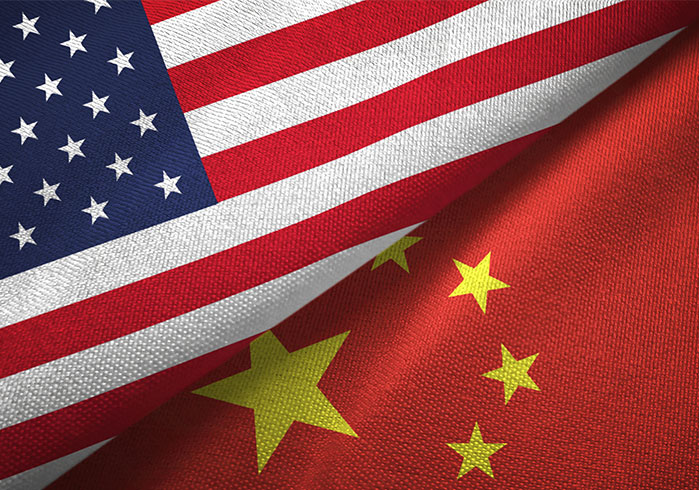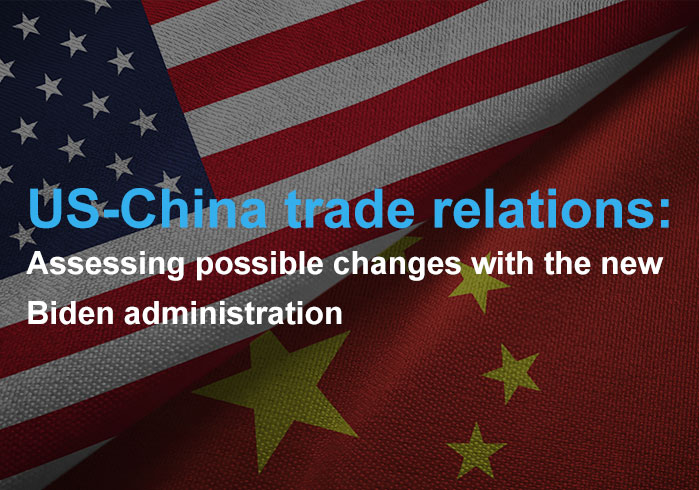
During the Trump Administration, US-China relations were marked by mutual aggression and quasi-trade sanctions. There was a barrage of tariffs and trade barriers between the US and China throughout the Trump Administration. To cool things down, a Phase One Deal was agreed to set out the parameters of the future trading relationships between two of the biggest economies in the world.
It is anticipated that the more internationalist approach that has been embraced by the Biden Administration will lead to a re-evaluation of the existing trade agreements between China and the US. This is even though anti-China sentiments appear to be a winning political argument in the US since there is a sizable portion of the population that agrees with them.
Another important dynamic at play is the fact that the Biden administration is seeking new trade alliances across the globe and renewing the ones that had been challenged by the “America First” policy of Donald Trump. At the heart of the challenge is coming up with a new trade agreement or deal that builds on the first. This second phase must also avoid some of the problems that were encountered in the first phase.
Phase Two Trade Deal
There are questions about whether Phase Two of the trade deals with China will come to fruition under the Biden Administration. Additionally, some experts are exploring the true nature of the eventual agreements that will be negotiated for the second phase. Others are not even sure that there will be a Phase Two, given the ongoing tensions between the US and China.
The fact that this is a new administration with a decidedly different political stance also raises the possibility of changing the entire premise of the trade relationships between the US and China. The stakes could not be higher, not least because the $14 trillion Chinese economy is a major player on the global stage. In designing a Phase One Deal, the Trump administration implicitly left the door open to further negotiations and amendments.
Perhaps one of the biggest challenges in meeting the targets of Phase One was the multiple numerical goals that were spread across a diversity of sectors. Besides, the agreement was not very clear about timelines for completion and the consequences for not achieving these. That is why some experts are already predicting that the desired compliance is not likely to be achieved within the short run.
The picture has been further complicated by the global COVID19 pandemic which severely impacted the operational efficiency of international shipping routes. At the same time, the pandemic provided opportunities for online shopping which requires further investment in shipping modalities across the board. Moreover, the US economy contracted due to the shutdown and social distancing measures. The implication is that China is today even more important to the global economy than it was before the pandemic.
President Biden has already signed a flurry of executive orders that are designed to undo many of the policy orientations of the previous administration. That is why many are predicting that Phase Two if it comes, will not be a mere replication of Phase One. Indeed, it might be an entirely new premise under which trade between the US and China will be conducted.
The industrial policies of both the US and China will continue to play an important role in their relationships. Apart from the international arena, certain domestic issues will directly or indirectly impact how and when the US and China negotiate. Certainly, domestic policy has a role to play in international affairs.
The U.S. and China Domestic Issues
The domestic concerns and priorities of the US and China diverge in important ways. For example, the US is concerned about the health of its agricultural industries which have suffered enormously under the soy boycott from China. Phase One of the trade relationship did speak of the agricultural sector. However, some issues were not fully or satisfactorily resolved at the time.
China is dealing with a growing population that requires work and social services. However, the country is also dealing with a demographic turn that partly arises out of the one-child policy. That means that in the longer term, China may have some labor requirements that are not fully met.
Moreover, there is a high level of income and social inequality in China. The government is concerned that attempts at wealth redistribution might lead to political volatility. Besides, there is also concern about the high levels of debt. The debt that other countries owe to China is largely dependent on the US currency for value. If the US decided to do so, it could completely devalue the debt owed by other nations to China.
That is why the issue of currency manipulation is so intriguing to experts in international trade and commerce. Whereas the US has the potential to change the global economy by changing the value of the dollar, it accuses China of being a currency manipulator for purposes of getting a competitive advantage in international trade.
The Biden Administration has additionally prioritized the issue of human rights. Yet, China has a notoriously poor record on its human rights arrangements and those of the countries that it supports. That means that there could potentially be a clash of values and practices.
Whereas China has recently been more vocal about the threat posed by climate change, it has not always had a good record on environmental issues. Indeed, even the US has recently faced criticism on this front when President Trump pulled out of the Paris Agreement on climate change targets. President Biden has now rejoined the pact, a move that has been welcomed by many countries across the globe including China.
Cooperation Between the Nations
Despite all the differences and priorities, some areas are ripe for multilateral cooperation in both the US and China. The new Biden Administration has stated that it would adopt a much more multinational approach to international relations as opposed to the unilateral approach that was favored by the previous Trump Administration. China could turn out to be a prime beneficiary of the change in policy orientation.
This is a matter of necessity and practicality, not least because of the close trade links between the US and China. For example, China has recently overtaken the US as the largest trading partner for the EU. The Biden Administration will not want to lose the lucrative EU market.
It has been suggested that the US may also deploy an indirect approach to diplomacy. This can be achieved through building alliances with other powerful actors on the global stage to bring China to heel. Building alliances strengthen the position of the US in any trade negotiations and settlement. Of course, the Biden administration may also be dealing with congressional obstruction from the Republican party as it seeks to operate through a series of executive orders.
Wrapping Up
Without a doubt, China and the US have had a rather rocky trade relationship during the Trump years. The Biden administration offers new approaches that include more rationalized sanctions and mutual trade. At the same time, experts recognize the competing demands of the domestic agenda may yet derail this new era of US-China cooperation.



